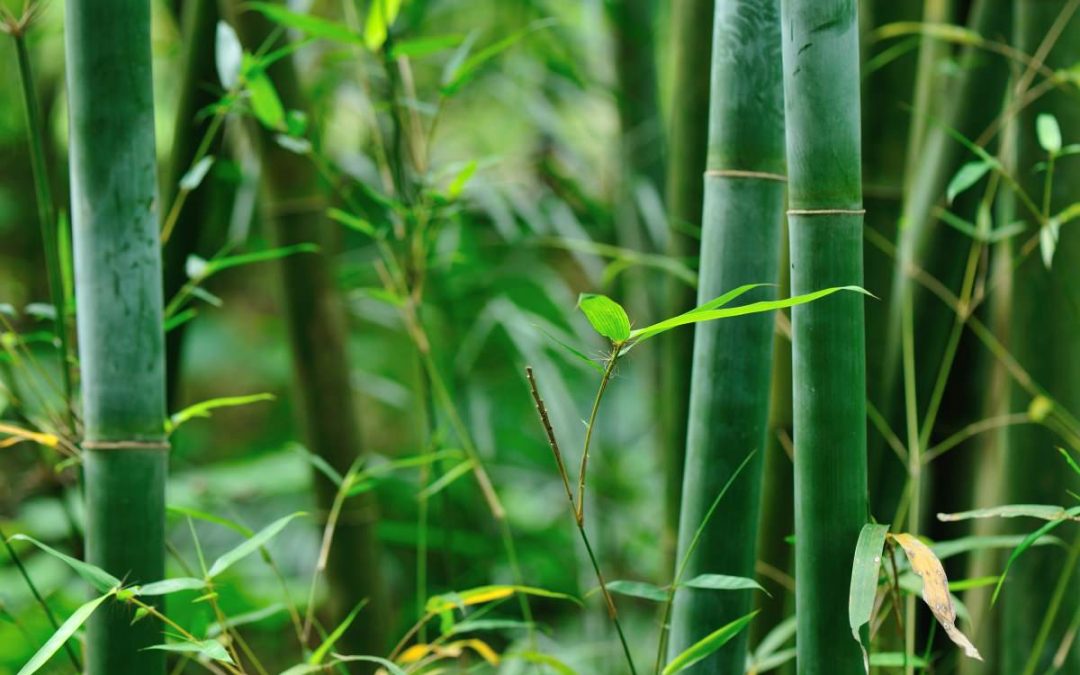-
China’s bamboo industry is predominantly built around a single species of temperate monopodial bamboo – Moso, or Phyllostachys edulis. Products, companies and others have been named after this iconic species, which covers more than 3 million hectares in Eastern China and is a critical component of the country’s ecology, landscape and industry.
However, the industrialization of bamboo as a viable alternative fiber is well underway across the rest of the world, and the determination of species for any new bamboo farming or bamboo plantation operation should take into careful consideration not only the climatic and geographic contexts, but of equal importance, the intended end product. Similarly, any industrial manufacturing operation targeting the use of naturally occurring bamboo should carefully consider the specific characteristics of the raw resource, before development.
With more than 1,600 species currently identified, bamboo species, both native and planted have a wide range of unique and differing factors that affect their suitability (and competitiveness) for any particular end product.
In this article we discuss only a handful of examples of the importance of product – species selection. These examples come from EcoPlanet Bamboo‘s experience on our own bamboo plantations around the world, as well as our various research plots and trials both on the bamboo silvilcultural side, as well as the R&D and product development we carry out as part of our mission to industrialize bamboo globally.
The factors that make a bamboo suitable or ideal for a particular end product can be quite broad, or can be extremely specific. And while many of these factors are superficial or related to the physical dimensions and qualities of any particular bamboo culm, an equal number are “invisible”, related to both the molecular and the cellular biology of the bamboo plant matter under observation.
Example 1: Bamboo Pulp
While the majority of bamboo species can be utilized for the broad production of bamboo pulp, their unique factors contribute significantly to the steps required and the cost of the processing, thereby indicating the economic viability of this end product for any particular bamboo farming or plantation operation. In particular, research indicates that the following factors can be key to species selection for a pulping operation:
-
Fiber length
-
Silica content
-
Lignin content
-
Occurrence of other impurities
-
Fiber color
In 2012 we carried out a comparison of fiber length of five targeted tropical bamboo species for a major corporation looking to produce bamboo toilet paper. Each species exhibited significant differences. Details of this research are available here.
Example 2: Bamboo Toothbrushes
Let’s consider the production of bamboo toothbrushes. Why have these had limited uptake despite the growing focus on the reduction of singe use plastics. Quite simply (with the exception of bamboo toothbrushes under production in India), most of these are produced in China, from Moso bamboo. One striking characteristic of Moso is that it has a relatively thin culm wall. A species such as Dendrocalamus asper has an even thinner culm wall. The result is that the majority of bamboo toothbrushes that are on the market today are eco-friendly but they are not able to replace the same feel in a user’s hand of the plastic toothbrushes that most of the world still uses. The structure of the bamboo culm means that they are lighter, thinner and with a far less solid feel in the user’s hand. All a result of the particular species of bamboo currently being used for their production.
In addition to the broad consideration of factors that contribute to the suitability of a bamboo species for a specific manufacturing technology and end product, there are more specific factors that can render a particular species as positive or entirely unsuitable.
Example 3: Bambusa balcooa
In South Africa, the species of choice to date amongst most bamboo plantation operations has been the naturalized Bambusa balcooa. This is a wise choice from a Site-Species selection perspective (discussed in our last posting).
However, from a Product-Species selection, a number of factors must be considered. Bambusa balcooa, grown in the context of the South African climate, is completely unsuited to use as a raw material for engineered timber. Low rainfall combined with poor rainfall predictability has a negative impact on this species, not in terms of the overall productivity or biomass yield, but resulting in culms that have a significant bend at the nodes – a direct symptom of water stress during the culm growth period. This habit has been cross referenced between EcoPlanet Bamboo’s Kowie Bamboo Farm, and the Bambusa balcooa grown much further north under a higher annual rainfall by Green Grid Energy, with the same pattern observed.
Companies such as MOSO Africa must therefore continue to rely on the importation of Chinese products for the South African market and any bamboo farming entity hoping to use this species to enter this market will likely be faced with disappointment.
Bambusa balcooa’s twisted growth pattern in South AfricaExample 4: “Solid bamboo”
Oxytenanthera abyssinica is often advertised as being a solid bamboo, with this seen as an advantageous factor. However, whether this is indeed advantageous or actually a severe disadvantage greatly depends on the targeted end product. High yields of fiber or biomass per input of land, water or nutrients is one of bamboo’s greatest advantages. A solid culm results in a greater culm weight, resulting in a higher volume of usable material, which would seemingly be an advantage.
For carbonization or the production of bamboo charcoal, either for use as a fuel or other end products, Oxytenanthera abyssinica‘s trait of having nearly solid culms at the base of each culm is a positive one. However, it renders this species as less suited for any industrial or mechanized production that requires a bamboo culm to be split or cut into strips or slats as part of the manufacturing process. This includes the majority of engineered timber products. Culms of these species, if solid, are suited for chipping, but not suited for slatting.
To conclude, with more than 1,600 identified species of bamboo found across a wide variety of climatic and geographic contexts, it is unsurprising that different species have unique structural, cellular and morphological traits. As a group of bamboo scientists, businesses and industrialists, what is important, is to develop a better knowledge base and available literature on the unique properties of each species, particularly the newer ones under commercialization and for each species identify the suitability for a range of industrial manufacturing technologies and end product applications.
There is no one size fits all when it comes to bamboo as an industrial crop.
Source: https://www.ecoplanetbambooplantations.com/single-post/ecoplanet-bamboo-product-species-selection
-


Recent Comments